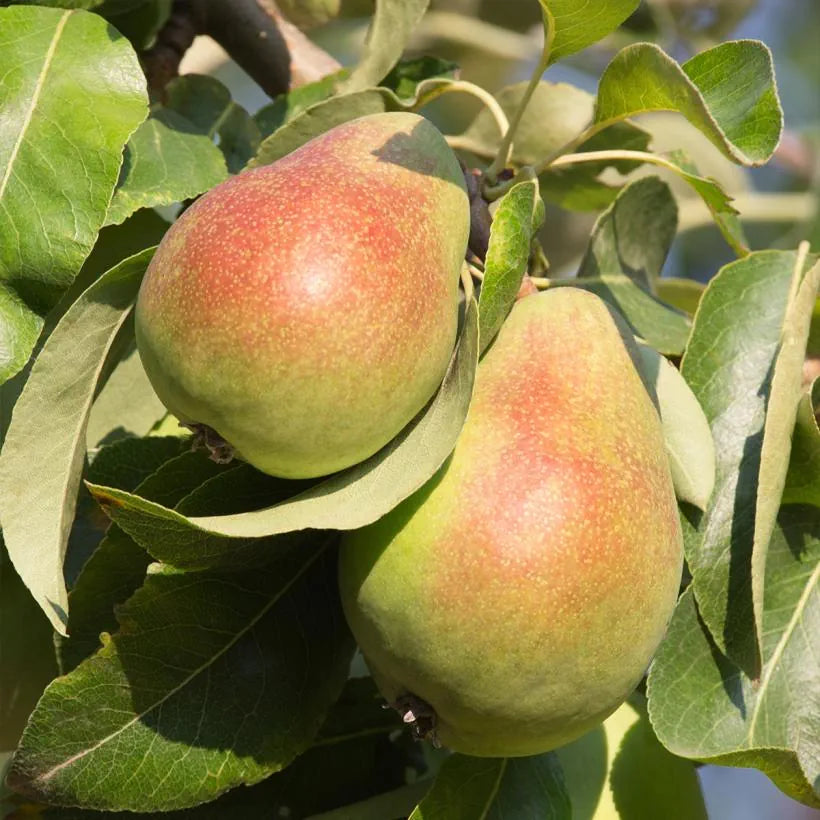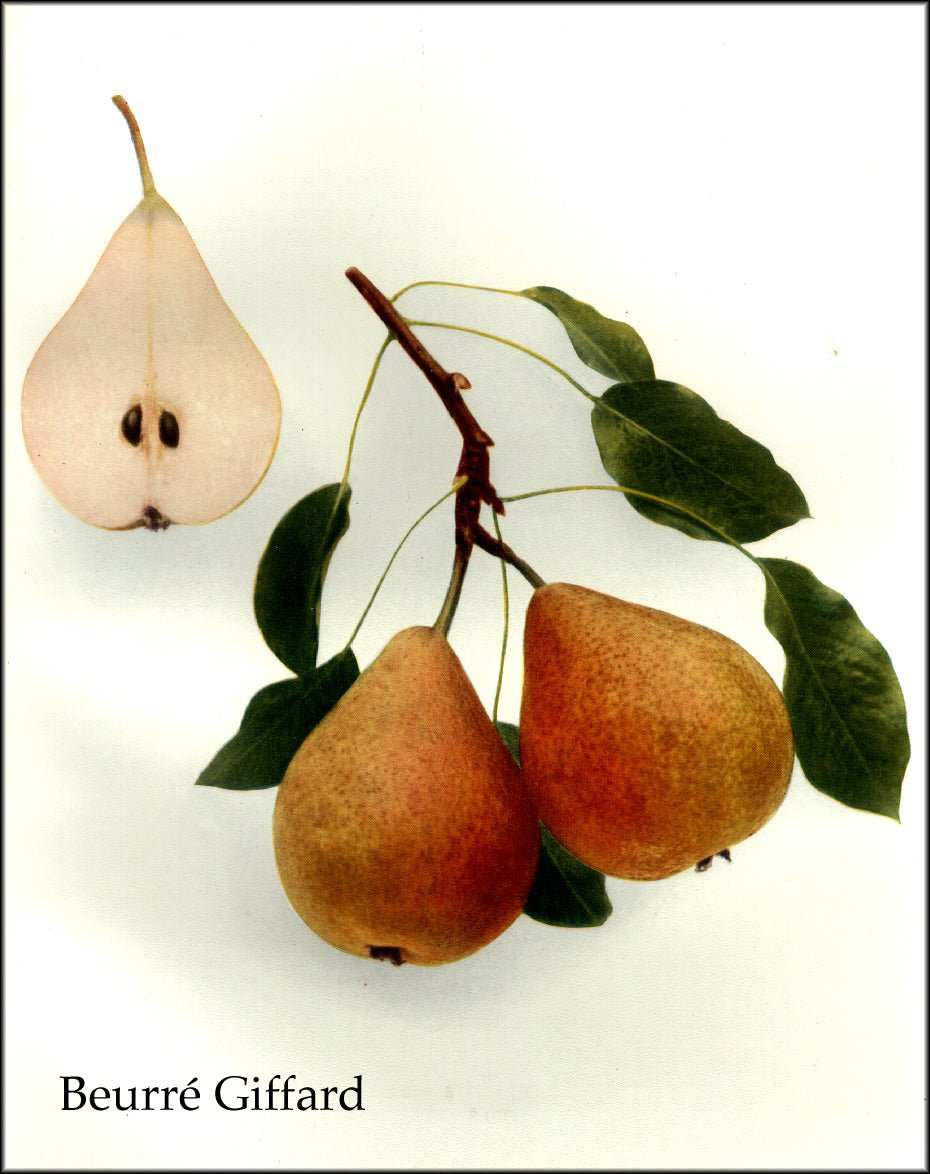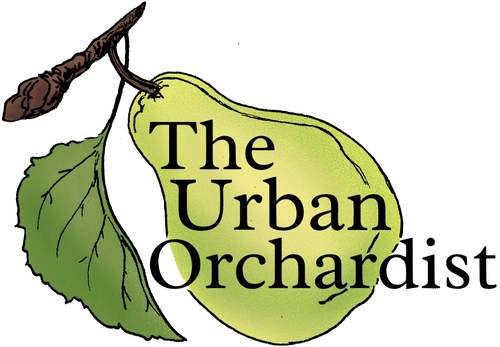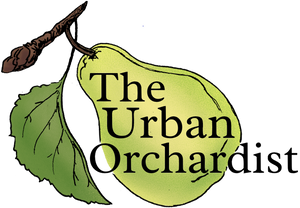

Beurre Giffard pear
Beurre Giffard is an old French pear variety that has withstood the test of time. It stands out for having exceptional cold hardiness (even growing well in Alaska), partial self-fertility (meaning you can get some fruit without another pear nearby), and resistance to fire blight, a common disease of pome fruits (apples, pears, quince).
Beurre Giffard fruit is relatively small, with very small cores, making it great for a quick snack.
Fruits ripen relatively early in August compared to other pears, and when ripe it has juicy, melting flesh.
They are excellent for fresh eating, canning, juicing, or any other culinary treat you can think of.
Pears generally do well in many soils, and Beurre Giffard has been found to grow very well in calcerous soil (i.e. limestone- and calcium-rich soil, often relatively alkaline, usually more loamy-clay than sandy).
Parentage:
Beurre Giffard is named after Nicolas Giffard, who discovered it as a chance seedling in 1825, allegedly near a rabbit warren in the Loire-Atlantique area of western France (where the Loire river flows into the Atlantic ocean). It made it to North America around 1850, and is still grown widely in France and Italy.
Rootstock:
OHxF 333. A semi-dwarf rootstock for pears. Confers some resistance to fire blight and is hardy to zone 4.
References:
Utilizing Host Resistance to Fire Blight.
Alaska Pioneer Fruit Growers Association.
Pear productivity on calcareous soils.
Image:
A colour plate from The Pears of New York (1921) depicting the Beurré Giffard, by Ulysses Prentiss Hedrick.




